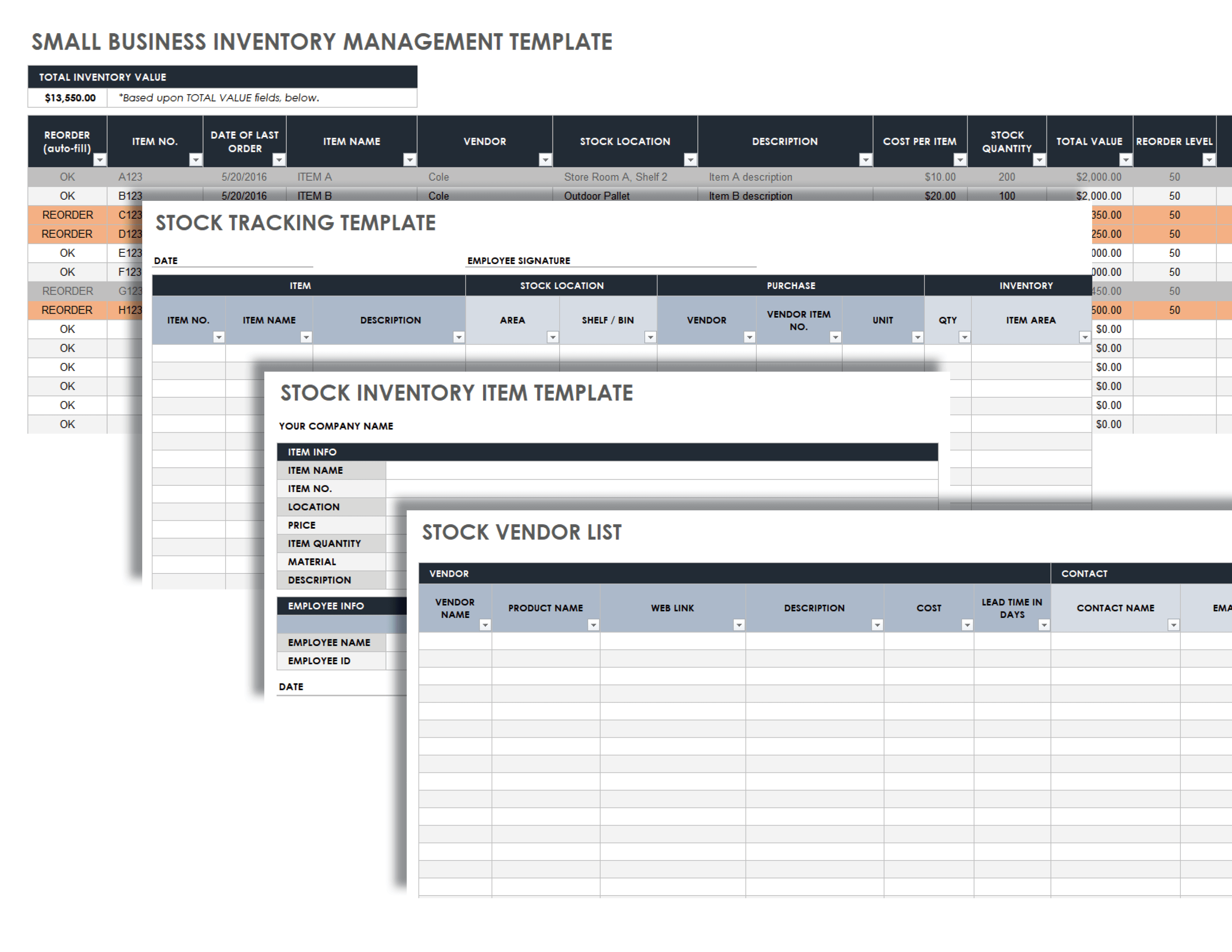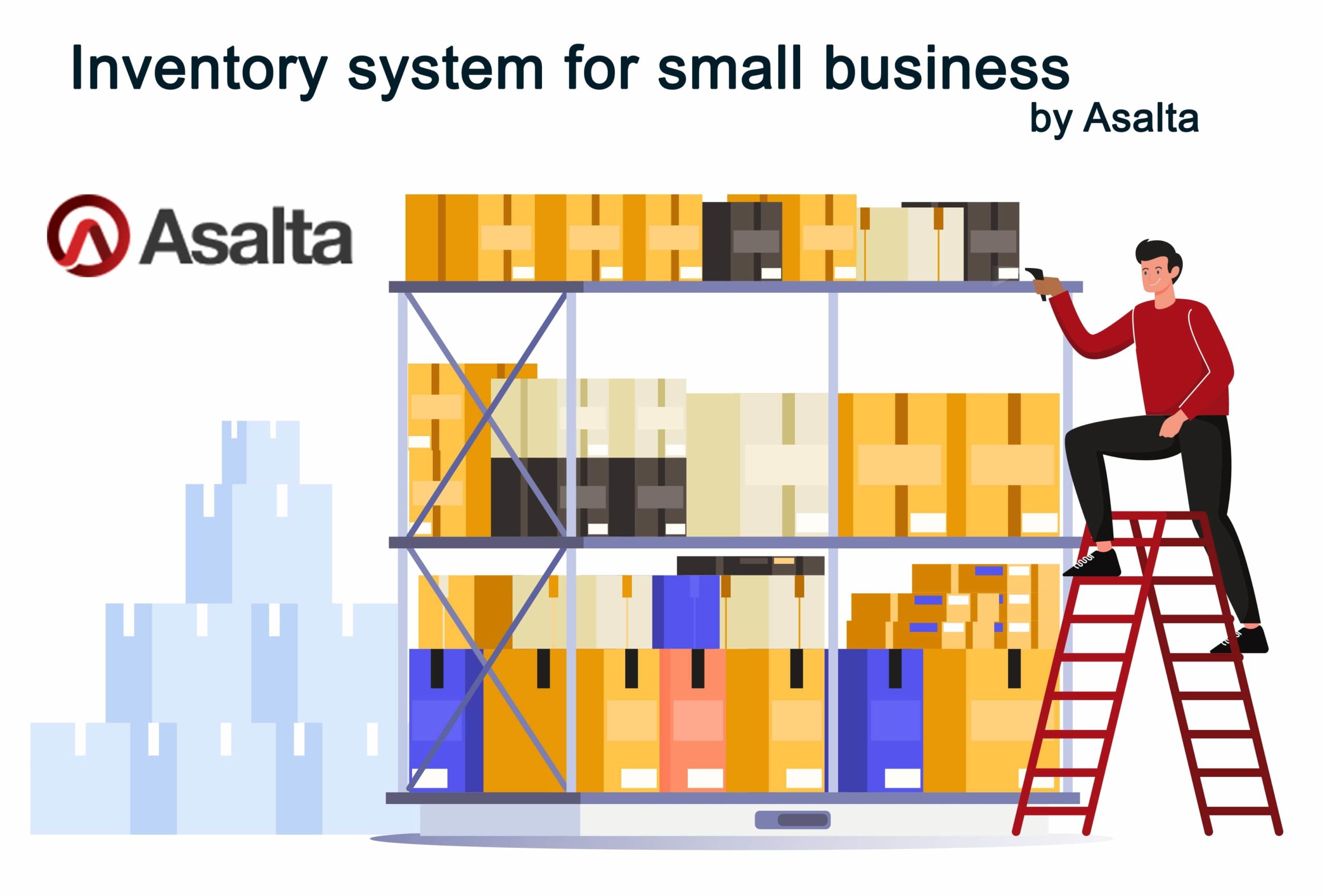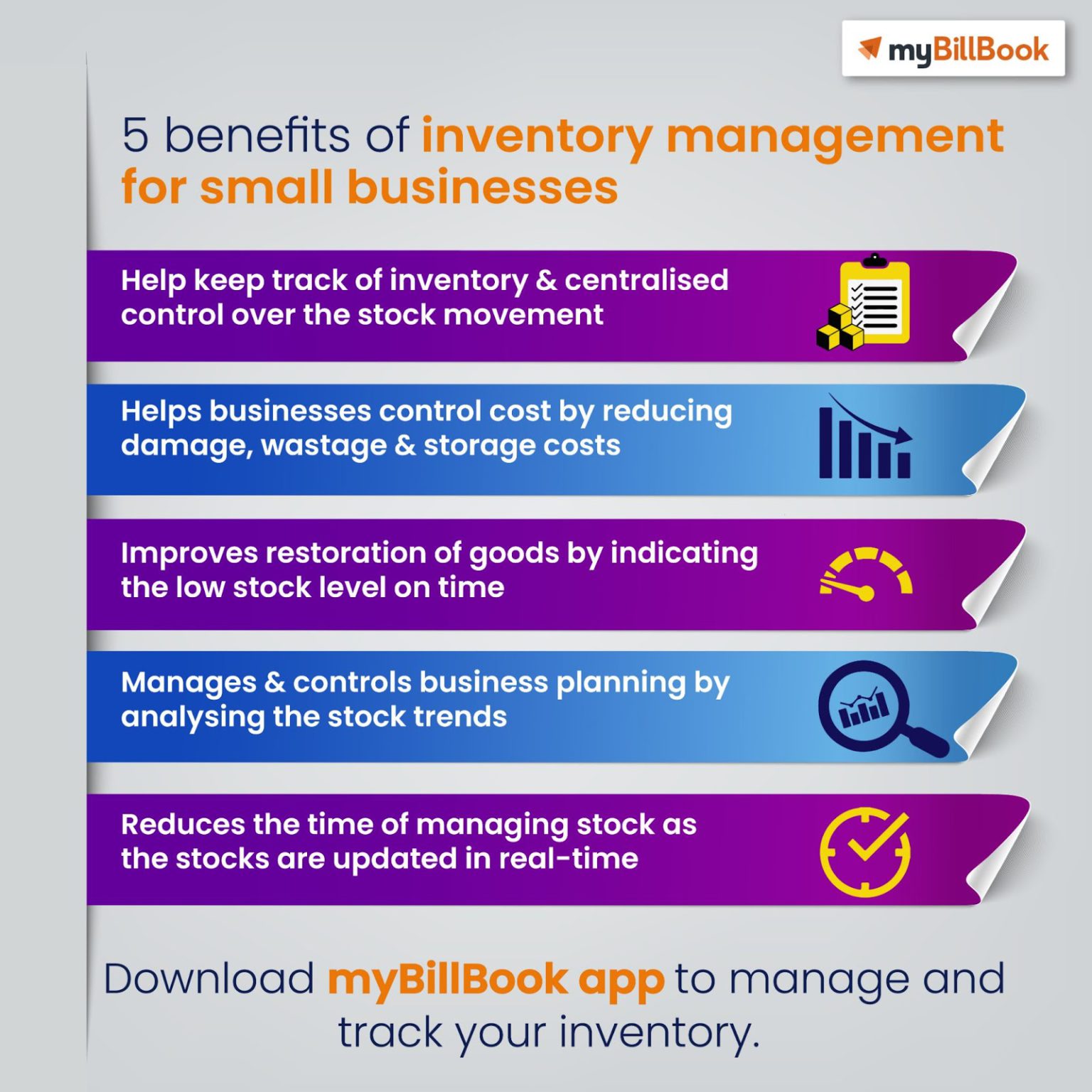Inventory system for small business – Inventory management is crucial for small businesses, enabling them to track, optimize, and control their stock levels efficiently. This comprehensive guide delves into the fundamentals of inventory management, exploring its types, implementation, tracking, optimization, reporting, and control techniques. By understanding these concepts, small businesses can enhance their operations, reduce costs, and gain a competitive edge.
Effective inventory management helps small businesses maintain optimal stock levels, avoid overstocking or understocking, and respond swiftly to changing market demands. It also improves customer satisfaction by ensuring product availability and reducing the risk of stockouts.
Inventory Management Fundamentals

Inventory management involves overseeing the flow of products within a business, ensuring the availability of necessary items while minimizing waste and costs. It encompasses activities such as forecasting demand, optimizing stock levels, and managing storage and distribution.
Effective inventory management is crucial for small businesses as it directly impacts profitability and customer satisfaction. By maintaining optimal inventory levels, businesses can reduce the risk of stockouts, avoid overstocking, and streamline operations.
Importance of Inventory Management for Small Businesses
- Prevents stockouts, ensuring product availability for customers.
- Reduces waste and spoilage, minimizing unnecessary expenses.
- Optimizes cash flow by aligning inventory levels with demand.
- Improves operational efficiency by streamlining storage and distribution processes.
- Enhances customer satisfaction by meeting demand and reducing wait times.
Types of Inventory Systems: Inventory System For Small Business

Choosing the right inventory system for a small business is crucial for managing stock levels efficiently and maintaining profitability. Various types of inventory systems are available, each with its advantages and disadvantages.
The choice of inventory system depends on factors such as the size of the business, the nature of the products, and the frequency of inventory turnover. Small businesses can choose from the following types of inventory systems:
Periodic Inventory System
The periodic inventory system involves physically counting the inventory at regular intervals, typically at the end of each accounting period. This system is suitable for businesses with low inventory turnover and stable demand.
- Advantages:Simple to implement and maintain; cost-effective.
- Disadvantages:Requires manual counting, which can be time-consuming and prone to errors; provides only a snapshot of inventory levels at specific points in time.
Perpetual Inventory System
The perpetual inventory system continuously tracks inventory levels in real-time. Each transaction, such as a sale or purchase, is recorded in the system, updating the inventory balance.
- Advantages:Provides up-to-date and accurate inventory information; reduces the risk of stockouts; facilitates better planning and decision-making.
- Disadvantages:More complex to implement and maintain; requires regular data entry and updates; may be more expensive than periodic inventory systems.
Hybrid Inventory System
The hybrid inventory system combines elements of both periodic and perpetual inventory systems. It involves regular physical counts to verify the accuracy of the perpetual inventory system.
- Advantages:Provides a balance between accuracy and cost-effectiveness; suitable for businesses with moderate inventory turnover.
- Disadvantages:Requires both manual counting and data entry; may not be as accurate as a pure perpetual inventory system.
Choosing the Right Inventory System
The choice of inventory system depends on the specific needs and characteristics of the business. Here are some recommendations:
- For small businesses with low inventory turnover and stable demand, a periodic inventory systemmay be sufficient.
- For businesses with higher inventory turnover or fluctuating demand, a perpetual inventory systemis recommended for real-time inventory tracking.
- Businesses with moderate inventory turnover and a need for both accuracy and cost-effectiveness can consider a hybrid inventory system.
Implementing an Inventory System
Implementing an inventory system is crucial for small businesses to manage their stock effectively. The process involves several steps, challenges, and best practices that need to be carefully considered.
Steps Involved in Implementing an Inventory System
- Define Business Requirements:Determine the specific needs of the business, including the types of inventory to be tracked, the desired level of accuracy, and the required reporting capabilities.
- Choose an Inventory Management Software:Select a software solution that meets the business requirements, considering factors such as functionality, cost, ease of use, and integration with other systems.
- Implement the System:Configure the software, train staff, and set up processes for data entry, inventory counting, and reporting.
- Monitor and Adjust:Regularly review the system’s performance, make necessary adjustments, and gather feedback from users to ensure optimal functionality.
Challenges Faced by Small Businesses during Implementation
- Limited Resources:Small businesses may have limited time, budget, and staff to dedicate to inventory management.
- Lack of Expertise:Implementing an inventory system requires technical knowledge and expertise that may not be readily available within the business.
- Data Accuracy:Ensuring the accuracy of inventory data is critical, but can be challenging due to human error, data entry mistakes, and other factors.
- Integration with Other Systems:Integrating the inventory system with other business systems, such as accounting and sales, can be complex and time-consuming.
Best Practices for Ensuring a Successful Implementation
- Get Stakeholder Buy-in:Involve key stakeholders in the planning and implementation process to ensure their support and understanding.
- Use a Phased Approach:Implement the system in stages to minimize disruption and allow for gradual adjustment.
- Train Staff Thoroughly:Provide comprehensive training to all users of the inventory system to ensure they are proficient in its operation.
- Establish Clear Processes:Document and communicate clear processes for inventory counting, data entry, and reporting to ensure consistency and accuracy.
- Monitor and Evaluate Regularly:Continuously monitor the system’s performance, gather feedback, and make adjustments as needed to maintain optimal functionality.
Inventory Tracking and Monitoring

Tracking and monitoring inventory levels are crucial for small businesses to maintain optimal stock levels, avoid overstocking or understocking, and ensure efficient inventory management.
Inventory tracking involves recording and updating the quantity and location of items in stock. This information is used to make informed decisions about reordering, production, and sales.
Methods for Tracking Inventory
- Manual Tracking:Using spreadsheets, notebooks, or physical tags to record inventory levels.
- Automated Tracking:Utilizing inventory management software or barcode scanners to automate inventory tracking and reduce errors.
- Cycle Counting:Periodically counting inventory to verify accuracy and identify discrepancies.
Use of Technology in Inventory Tracking
Technology plays a significant role in enhancing inventory tracking and monitoring:
- Inventory Management Software:Centralizes inventory data, automates updates, and provides real-time visibility into stock levels.
- Barcode Scanners:Accelerate inventory tracking, reduce errors, and improve efficiency.
- RFID (Radio Frequency Identification):Tracks inventory items using radio waves, enabling automated and real-time monitoring.
Inventory Optimization
Inventory optimization is a key aspect of inventory management that helps businesses maintain optimal inventory levels to meet customer demand while minimizing costs. It involves strategies and techniques to determine the ideal quantity of each item to stock, considering factors such as demand patterns, lead times, and storage costs.
By optimizing inventory levels, businesses can reduce the risk of overstocking, which can lead to excess storage costs, product obsolescence, and potential losses. Conversely, it also helps prevent understocking, which can result in lost sales, customer dissatisfaction, and reputational damage.
Inventory Optimization Techniques
- ABC Analysis:Classifies inventory items into three categories (A, B, and C) based on their annual usage value. High-value items (A) require closer monitoring and tighter control, while low-value items (C) can be managed with less frequent reviews.
- Economic Order Quantity (EOQ):Determines the optimal quantity to order at a time to minimize total inventory costs, considering factors such as demand, ordering costs, and holding costs.
- Just-in-Time (JIT) Inventory:Aims to minimize inventory levels by receiving items only when they are needed for production or sale, reducing storage costs and the risk of obsolescence.
- Safety Stock:Maintains a buffer of inventory above the expected demand to mitigate the risk of stockouts due to unexpected fluctuations in demand or supply chain disruptions.
Benefits of Inventory Optimization for Small Businesses
- Reduced Costs:Optimizing inventory levels can significantly reduce storage, ordering, and carrying costs, improving profitability.
- Improved Customer Service:Maintaining optimal inventory levels helps businesses meet customer demand, reducing the risk of stockouts and improving customer satisfaction.
- Enhanced Cash Flow:By reducing excess inventory, businesses can free up cash that can be invested in other areas of the business, such as marketing or product development.
- Increased Efficiency:Streamlined inventory management processes can save time and resources, allowing businesses to focus on other core activities.
Inventory Reporting

Inventory reporting is crucial for businesses to effectively manage their inventory and make informed decisions. It provides insights into the quantity, value, and movement of inventory items, enabling businesses to track their stock levels, identify trends, and optimize their inventory management practices.
Types of Inventory Reports
- Inventory Summary Report:Provides a snapshot of the total inventory, including the number of items, total value, and turnover rate.
- Inventory Turnover Report:Calculates the number of times inventory is sold and replaced within a specific period, indicating the efficiency of inventory management.
- Inventory Ageing Report:Shows the age of inventory items, helping businesses identify slow-moving or obsolete stock that may need to be discounted or disposed of.
- Inventory Valuation Report:Determines the value of inventory using different valuation methods, such as FIFO (first-in, first-out) or LIFO (last-in, first-out).
- Inventory Reorder Report:Triggers reorder points when inventory levels fall below a certain threshold, ensuring timely replenishment and preventing stockouts.
Use of Inventory Reports for Decision-Making
Inventory reports provide valuable data that can assist businesses in making informed decisions regarding:
- Inventory Optimization:Identifying overstocking or understocking issues, and adjusting inventory levels accordingly to minimize costs and improve efficiency.
- Supplier Management:Evaluating supplier performance based on delivery times, quality, and pricing, and making informed decisions about supplier selection and negotiation.
- Pricing Strategy:Analyzing inventory turnover and ageing reports to identify slow-moving items that may require price adjustments or promotions to clear stock.
- Forecasting Demand:Using historical inventory data to predict future demand and plan production or procurement activities accordingly, reducing the risk of stockouts or excess inventory.
- Financial Planning:Determining the value of inventory for financial reporting purposes, such as balance sheets and income statements, and assessing the impact of inventory on cash flow and profitability.
Inventory Control
Inventory control is a crucial aspect of inventory management that aims to optimize stock levels and minimize losses. It involves techniques to ensure the right quantity of inventory is available when needed, without overstocking or running out.
Safety Stock and Reorder Points
Safety stock refers to the extra inventory held to buffer against unexpected fluctuations in demand or supply. Reorder point is the inventory level at which a new order is triggered to replenish stock. Determining appropriate safety stock levels and reorder points is essential for maintaining optimal inventory levels.
Best Practices in Inventory Control
Effective inventory control practices include:
Regular inventory audits
Physical counts and comparisons with inventory records to ensure accuracy.
Cycle counting
Continuous inventory counting of specific items or sections to identify discrepancies.
First-in, first-out (FIFO) method
Using the oldest inventory first to minimize spoilage or obsolescence.
Just-in-time (JIT) inventory
Ordering inventory only when needed, reducing storage costs and minimizing waste.
ABC analysis
Classifying inventory items based on their value and usage, allowing for targeted inventory management.
Inventory Management Software
Inventory management software is a powerful tool that can help businesses of all sizes improve their inventory management processes. It can help businesses track inventory levels, manage orders, and optimize inventory levels. This can lead to a number of benefits, including:
- Reduced inventory costs
- Improved customer service
- Increased efficiency
- Reduced risk of stockouts
- Improved decision-making
There are a number of different inventory management software solutions available, each with its own unique features and benefits. It is important to compare different solutions before choosing one to ensure that you find the best solution for your business needs.
Factors to Consider When Choosing Inventory Management Software
When choosing inventory management software, there are a number of factors to consider, including:
- The size of your business
- The type of inventory you manage
- Your budget
- Your level of technical expertise
- The features you need
It is also important to consider the implementation process. Make sure that you choose a solution that is easy to implement and use. You should also consider the cost of implementation and ongoing support.
Inventory Management in Different Industries

Inventory management practices vary significantly across different industries due to variations in product characteristics, demand patterns, and supply chain dynamics. Each industry faces unique challenges and requires tailored inventory management strategies to optimize efficiency and profitability.
Retail, Inventory system for small business
- High product variety and fluctuating demand
- Need for accurate demand forecasting and inventory replenishment
- Focus on managing inventory turnover and preventing stockouts
Manufacturing
- Complex production processes and long lead times
- Importance of inventory planning and coordination with suppliers
- Use of safety stock to mitigate supply chain disruptions
Healthcare
- Critical nature of inventory management for patient care
- Need for accurate inventory tracking and traceability
- Focus on managing inventory levels to ensure availability while minimizing waste
Technology
- Rapid product innovation and short product lifecycles
- Importance of managing inventory obsolescence and product returns
- Use of inventory optimization techniques to maximize inventory utilization
Closing Notes
In conclusion, implementing a robust inventory system is essential for small businesses to streamline their operations, optimize stock levels, and gain valuable insights into their supply chain. By embracing the principles and best practices Artikeld in this guide, small businesses can unlock the full potential of inventory management and drive their success in today’s competitive market.
Common Queries
What are the benefits of inventory management for small businesses?
Inventory management helps small businesses reduce costs, improve customer satisfaction, streamline operations, and gain valuable insights into their supply chain.
What are the different types of inventory systems available?
Small businesses can choose from various inventory systems, including perpetual, periodic, and hybrid systems, each with its advantages and disadvantages.
How can small businesses optimize their inventory levels?
Inventory optimization involves implementing strategies such as ABC analysis, just-in-time inventory, and safety stock management to maintain optimal stock levels.